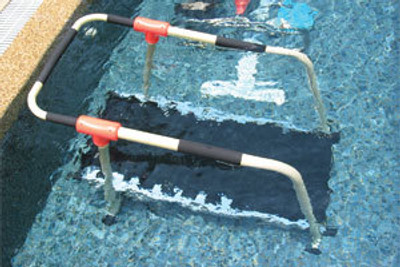 29th Sep 2018
29th Sep 2018
Case Studies: How To Effectively Treat Low Body Injuries & Conditions
Injuries to the lower extremities are debilitating because they involve large muscle groups and joints and limit our ability to perform daily activities like walking, bending or climbing. From low back pain to knee strain, physical therapy is key for patients who have had an injury to the lower body because it can help speed up their recovery, reducing symptoms and future risk of recurrent injury.
We’ve talked about lower extremity injuries in a previous post. In this post will discuss diverse case studies of lower body injuries or chronic conditions that benefit from physical therapy and specific modalities used to address individual symptoms.
Case Studies: Injuries or Chronic Conditions Affecting the Lower Body
Low Back Pain
43-year-old man complains of chronic back pain. Patient has experienced two vehicular accidents that have increased his incidence of back pain where a new job in which he now has prolonged sitting as part of his daily tasks has made his pain chronic. Patient complains of 7/10 pain according to pain scale 5-6 days a week and has trouble getting comfortable sitting or sleeping. The practitioner plans the use of pain-relieving modalities like ultrasound therapy an LED light therapy which offer a non-invasive option that has a low-risk of triggering pain.
Pro-Tip: The Mettler Sonicator 740X is a great choice, because it comes standard with a 10 cm soundhead applicator which is the perfect size to treat an area like the low-back. Using settings at 1 MHZ and continuous will help deeply penetrate the tissues of the low back.
Sprain secondary to Arthritis
49-year-old woman sprained her knee while hiking. In addition to sprain, it is found that patient has arthritis in her knee an is experiencing deterioration of her knee cartilage. In addition to a cortisone injection, patient’s Doctor recommends physical therapy to help address acute pain and improve stability of the knee joint. Practitioner used a combination of ultrasound therapy and electrical stimulation simultaneously to help reduce pain and local edema while stimulating healing. In addition to pain-relief, practitioner utilized specific stabilization exercises to improve strength surrounding the knee joint. Practitioner also used kinesio tape to help further improve knee stabilization.
Pro-Tip: Estim units are a great choice if a practitioner wants to offer patients a pain-relief alternative to oral pain medication. For use during a session, the best estim units are coupled with ultrasound therapy as part of a stand-alone unit, like the InTENSity CX4. The best home estim units come with pre-sets to take the guess-work out of treatment parameters for patients.
Hip Replacement
A 62-year-old woman with Rheumatoid Arthritis was referred for hip replacement due to joint deterioration. Post-treatment, physical therapy was recommended to help decrease acute post-surgical pain in addition to improving strength and stabilization of the joint. The practitioner used warm water whirlpool therapy at the end of sessions to help decrease pain while at the same time improving range of motion. Further, contrast therapy with the use of cold compacts and hot packs was also utilized to decrease acute pain at the beginning of treatment.
Pro-Tip: Once the patient’s acute pain has decreased, strength and stabilization become the main goals of rehabilitation. An underwater treadmill is a great choice to help improve achieve these goals in addition to improving cardiovascular function without placing any undue stress on the hip joint.
ITB Band Syndrome
A 23-year-old man who is an Ultra-Marathon runner complains of pain on the outside of his knee and hip. After an evaluation, it is determined the patient has IT Band syndrome that is not only causing pain, but is beginning to impinge movement, particularly when running. Patient can only tolerate 5 minutes of running, before complaining of aching pain at 6/10. Kinesio tape in addition to stabilization and strengthening exercises are important to helping reduce the pain and reducing recurrent IT Band pain. In addition, the practitioner used ultrasound therapy to help further reduce pain, particularly any that had been triggered as a result of therapeutic exercise.
Pro-Tip: When using ultrasound therapy, a device like the Soundcare Plus is a good choice because it comes with a smaller soundhead applicator (1cm or 5cm) which is the perfect size for reducing pain and facilitating tissue repair. What’s more, programming treatment to use 3 MHz is perfect for connective tissue like the IT Band or superficial areas, because it doesn’t penetrate as deeply as 1 MHz.
Contact us today!
We can help your practice find the perfect modality or evaluation tool to help your practitioners treat injuries of the lower extremities. Contact us today and we’ll answer any questions you may have about the benefits of using each device! Call us today at 1-801-770-3328 for more information.






